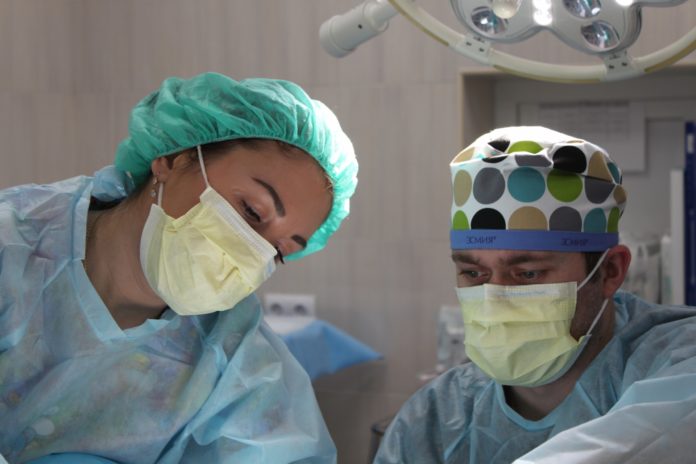Medical mask manufacturers around the world are having trouble keeping up with demand, but an international team of scientists may have found a way to help. Their research revealed two new methods for sterilizing disposable masks, allowing the masks to be reused by healthcare workers with limited access to medical resources.
The research included contributions from the University of Alberta, the University of Calgary, and Université Laval, and was published in Infection Control & Hospital Epidemiology.
We can’t keep up with medical mask production
Disposable medical masks are excellent at filtering out virus particles, but their limited use means that we go through many of them each day, and the global supply chain can’t keep up.
This is particularly concerning in hospitals, where healthcare workers are meant to dispose of their surgical masks after each patient. For doctors who see many patients each day, this could mean throwing out dozens of masks.
While Canada has mostly managed to ramp up our mask production, many countries don’t have the resources to produce a sufficient supply. Healthcare and other front-line workers in these regions are often left vulnerable as a result.
At the same time, a lack of proper disposal methods for medical masks means that many of them wind up as pollution in our environments. This is particularly problematic when they make their way to our oceans, and end up releasing millions of microplastics into our waters.
To combat these two problems, the scientists behind the study investigated different methods of sterilizing disposable masks. While some decontamination methods have already been put to work in Canada, the goal of this study was to find low-cost, effective methods that could also be adopted by countries with limited access to specialized resources.
The team tested two different methods of sterilization: heating the masks in order to inactivate the virus, and applying a combination of bright light and methylene blue (a compound commonly used by blood banks to kill pathogens). They treated masks that had been exposed to coronavirus particles with each method, and then tested whether the virus had been removed, and whether or not the mask was still safe.
Simple methods are effective at sterilizing medical masks
The researchers found that both methods worked well to eliminate the virus, with 99.8% to more than 99.9% of virus particles being inactivated in both cases. However, the second method (using bright light and methylene blue) may be slightly preferable, because there’s a chance that exposing the masks to heat can degrade their elastic ear straps.
While the methylene blue compound does most of the work in inactivating the virus particles in the second method, the researchers found that bright light is also an important part of the process.
“What we’ve discovered is that a significant amount of the inactivation takes place without needing to add a lot of light,” explained David Evans, a member of the University of Alberta’s Li Ka Shing Institute of Virology and co-author of the study, in a press release, “but [the bright light] does sort of finish the job for you.”
Without bright light, the team found that a higher amount of methylene blue was needed to get the job done. This is because light can help to activate the methylene blue compound.
An accessible sterilization method
Going forward, the team hopes that their method will protect healthcare professionals around the world. A key benefit of both methods is the fact that they’re inexpensive, meaning that countries with limited access to medical equipment can also make use of them.
“[Our decontamination method] is effective, is low cost, and does not require specialized equipment, making it applicable in low- to high-resource settings,” the authors said.
While heating was less preferable than using methylene blue, it may be an important consideration for countries with very limited resources. The method only requires temperatures of up to 65 degrees Celsius in humid air, which can be achieved without specialized equipment.
“Heat is a pretty good way of inactivating these viruses,” Evans said. “We found that after 15 minutes at 65 degrees Celsius in humid air, the virus was all gone.”
With the recent discovery of a new COVID-19 variant of concern, the variety of decontamination methods proposed by scientists will be important for healthcare workers around the world.
“From the perspective of a [healthcare] provider, being really sure that their protective equipment has been decontaminated is important,” Evans added.
“Any kind of treatment that gives you some additional sterilization of a mask would be of value to the people who have to wear them all the time.”








































